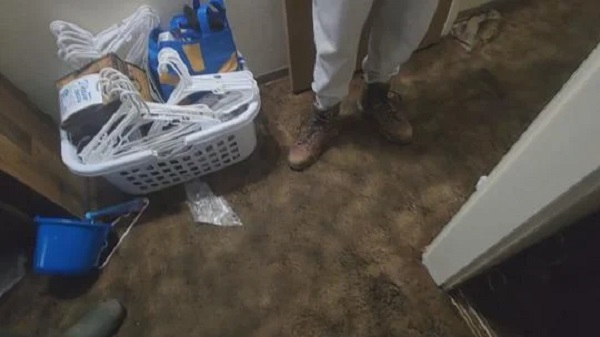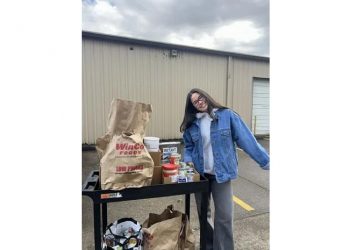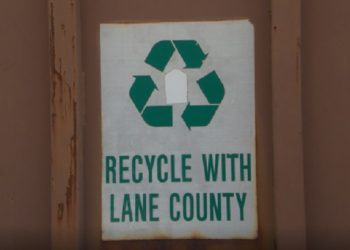DRAIN, Ore. — Nearly a week after a powerful rainstorm caused severe flooding in Douglas County, the town of Drain is still reeling from the aftermath. Streets once submerged in water now face the daunting task of cleanup, with significant damage to homes and businesses. For residents like Mercedes Long, the road to recovery feels increasingly uncertain.
On March 16, a torrential downpour quickly escalated into one of the most devastating floods the area has experienced in years. What began as a few small puddles quickly transformed into rapidly rising waters that overwhelmed the community. Long, who lives in an apartment complex on Date Street, described how the storm drain in their parking lot began to overflow, turning the area into a virtual river in a matter of minutes.
“The storm drain in our parking lot started flooding and overflowing. I moved my car, and we came back about an hour later, and the parking lot had water up to the sidewalk,” Long said. “I’ve never seen it like it was.”
For residents living on the ground floor of the apartments, the situation was even worse. With the water rising rapidly, many apartments suffered extensive flooding. To make matters worse, the floodwater contained sewage, leaving behind a foul odor that made the area uninhabitable.
“It smells like sewer. It’s disgusting. You can’t be in here for more than a couple hours before you get a headache,” Long explained.
As the waters receded, Long and her neighbors were left with the difficult task of sorting through their ruined belongings. Furniture, appliances, and personal items were damaged beyond repair, and many residents had to dispose of their possessions. Long, who lost her fridge and much of her food, found herself relying on food assistance programs like the Department of Human Services, which credited her $23 back to her food stamps.
However, the financial strain is just one part of the struggle. Long expressed frustration with her renters insurance, which has not been helpful in covering the damage to her apartment. “What’s the point of renters insurance if it doesn’t help when it’s needed?” she said. “I’ve lost my fridge, and I lost all of my food. I’ve lost furniture, beds.”
Despite the widespread devastation, residents have found it difficult to access immediate help. Agencies like the Red Cross, which would typically assist in these types of disasters, have long waiting lists. Long’s attempt to reach out for assistance revealed that she would have to wait at least three weeks for support. As she continues to navigate the aftermath of the disaster, Long said the lack of available resources has only added to the sense of abandonment.
“There are no resources for us,” she said. “We get told to call the Red Cross. I’ve gotten on a call and was told we’re on a 3-week waiting list. Everywhere we go for help, we get turned somewhere else. It’s a big fat ‘sorry oops.’ What do we do now?”
In addition to the struggles of those affected by the flooding, the town’s infrastructure has also taken a significant hit. Landslides caused by the relentless rain have cut power to some businesses, further complicating recovery efforts. With no clear timeline for repairs and cleanup, residents are left uncertain about when they will be able to return to their homes.
For now, Long is staying with friends, unsure when or if she will be able to return to her apartment. Her landlord has informed her that it may take several months for the necessary repairs to be made, leaving residents in limbo.
The community of Drain, like many others across the region, is now facing the difficult process of rebuilding and recovering from a disaster that arrived with little warning. As the clean-up continues, residents like Mercedes Long are calling for greater support and a more coordinated response to help those affected by this devastating event.
In the aftermath of the flood, it’s clear that while the waters may have receded, the challenges facing Drain’s residents are far from over.














